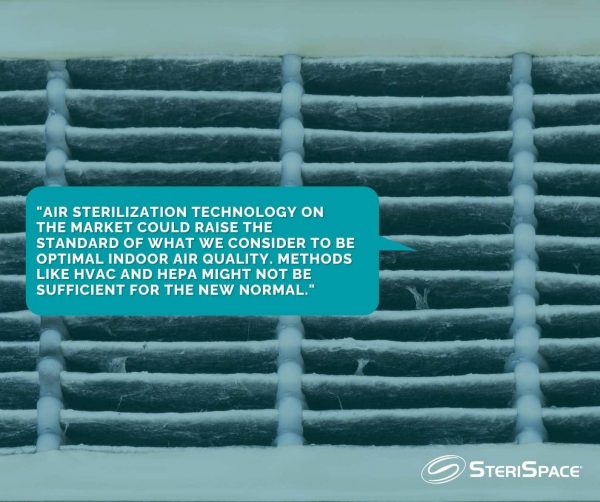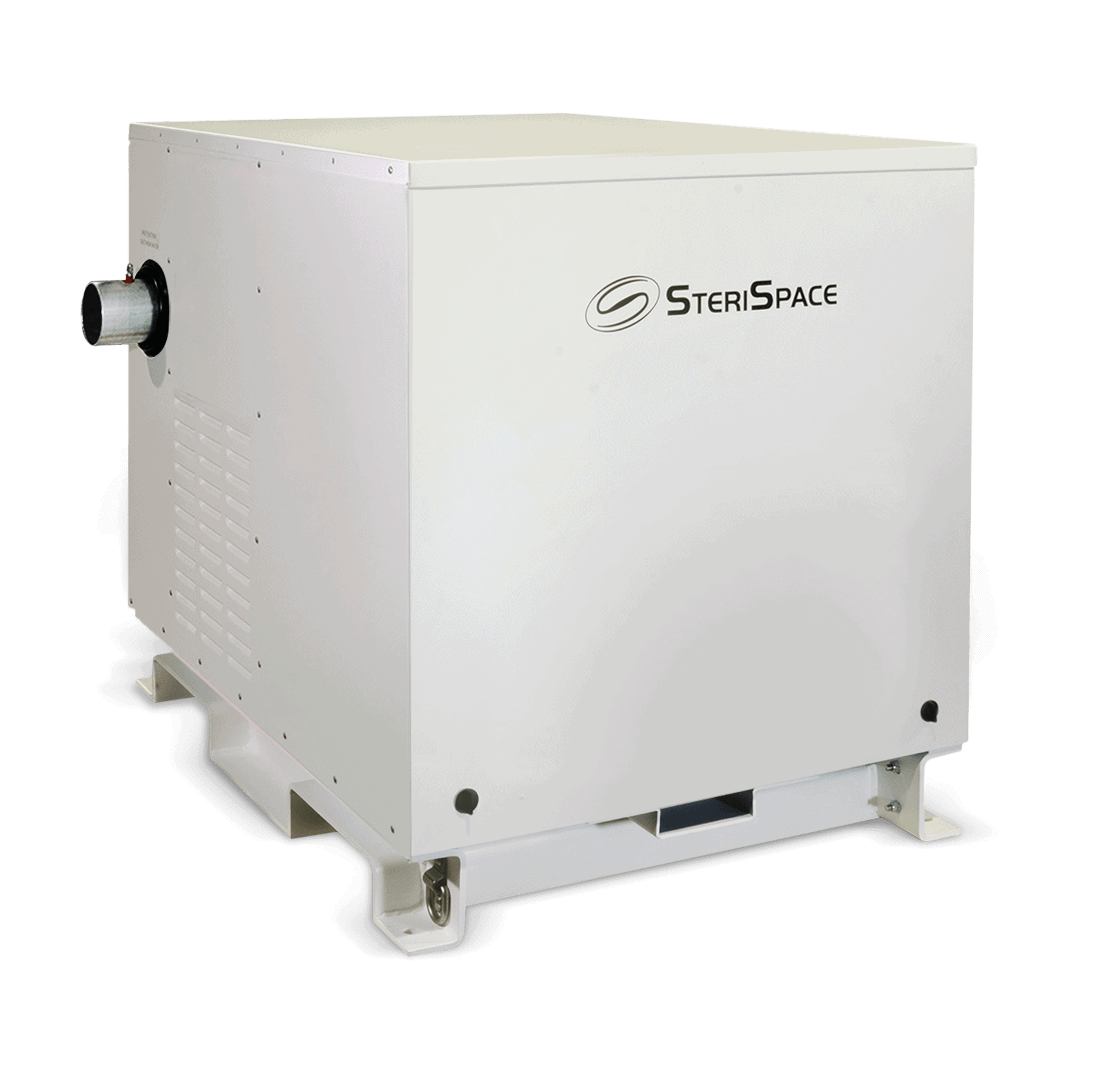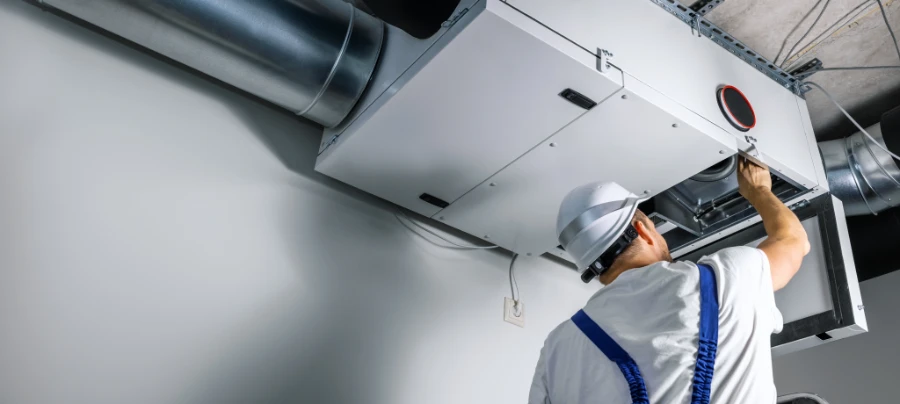
The WHO overturned dogma on how airborne diseases spread
The WHO now states that exhaled pathogens remain suspended in air contrary to the belief that pathogens were transmitted through droplets… The answer is SteriSpace®
The US has made significant progress in containing the COVID-19 pandemic with vaccines, rapid tests, N95 masks, and new antiviral treatments now readily available to the public. However, two years into the pandemic, the same focus is finally being placed on air quality and building health to further combat the spread of the virus.
Recognizing that proper ventilation and maintaining good indoor air quality could be the final and most important piece of a comprehensive COVID-19 containment strategy. SteriSpace could play a role in promoting building health and ultimately in reducing airborne disease transmission.
The Biden Administration has engaged the help of numerous experts and agencies. One agency that’s been underutilized throughout the course of the pandemic, the EPA’s Indoor Environments Division, has received elevated status in helping to achieve healthier buildings.
By acknowledging that the virus is actually spread through indoor air, building health is placed much higher on the priority list. Of course, understanding how the virus is spread is crucial in our prevention strategy. If COVID-19 were spread via droplets, we would focus our efforts on social distancing. Similarly, if it were spread via surfaces then hand sanitizer and Clorox wipes would be our main prevention strategy.
COVID-19 is airborne, therefore better ventilation and filtration is what’s going to reduce viral load in the air. If we knew now what we knew then, we likely could have changed the course of the pandemic and saved countless lives.

By advocating for upgrades in HVAC systems and air filtration, The Biden-Harris Administration’s clean air initiative brings awareness to the key role indoor air quality plays in reducing the spread of airborne viruses. Paying closer attention to air quality and investing in better air handling technology is long overdue and could have served better in the earlier days of the pandemic. Since we are now finally factoring in food air quality to slow the spread, shouldn’t we also be inspecting the technology we use to achieve better IAQ as well? We’ve come a long way since the beginning of 2021, when widespread shutdowns for schools and businesses were still among the only ways to contain the coronavirus. The American Rescue Plan Act (ARP) of 2021 then went into effect earlier last year, giving state and local governments additional resources. This granted schools, businesses, and other public settings with over $300 billion to improve their COVID-19 measures. Schools and businesses will also be provided with a so called “Clean Air in Buildings Checklist.” This checklist includes guidance on assessing indoor air quality (IAQ), optimizing fresh air ventilation, enhancing air filtration in HVAC systems, as well as engaging surrounding communities to generate awareness and participation in maintaining healthy buildings.
Innovative technology amid a global pandemic is one of the very few positive outcomes of COVID-19. Much of this emerging technology has become commonplace in society now, illustrating our adaptiveness in times of unprecedented crisis.
Air sterilization technology on the market could raise the standard of what we consider to be optimal indoor air quality. Methods like HVAC and HEPA might not be sufficient for the new normal.
Standard air handling methods such as HVAC and HEPA can actually pose their own risks to building health. Outdated HVAC systems contribute to poor air quality and circulation, while HEPA filters require frequent maintenance and can release particles right back into the air upon replacement.
SteriSpace uses a patented compressive heating system to uniformly sterilize the air in one pass, while continuously recirculating sterilized air. With little to no maintenance required, there’s no drawbacks to investing in this technology.

SteriSpace’s unique technology can achieve a 99.9999% reduction in airborne contaminants. Using patented compressive heating technology, SteriSpace removes airborne bacteria, SARS-like viruses, particulate matter, and even select VOCs with an optional chemical catalyst. With the ability to continuously recirculate sterilized air, SteriSpace saves energy while uniformly treating the air in a single pass.
There are clear advantages to pursuing healthier buildings. Not only does this mean better outcomes for COVID-19 outbreaks, but we can be better prepared for other airborne disease outbreaks. If the pandemic has taught us anything at all, it’s that the new normal calls for new standards in air quality, and SteriSpace could very well be what carries us through the next phase of the pandemic.
Curious to know more about SteriSpace's one-of-a-kind technology? Click here to schedule a meeting with one of our air sterilization specialists.

The WHO now states that exhaled pathogens remain suspended in air contrary to the belief that pathogens were transmitted through droplets… The answer is SteriSpace®

The project, which included UB’s Center for Integrated Global Biomedical Sciences, aims to keep hospitals and schools clean from viruses and microbial growth.

Proper ventilation in buildings is vital to maintaining good air quality. Click here to find out about the correct ventilation rate in buildings.